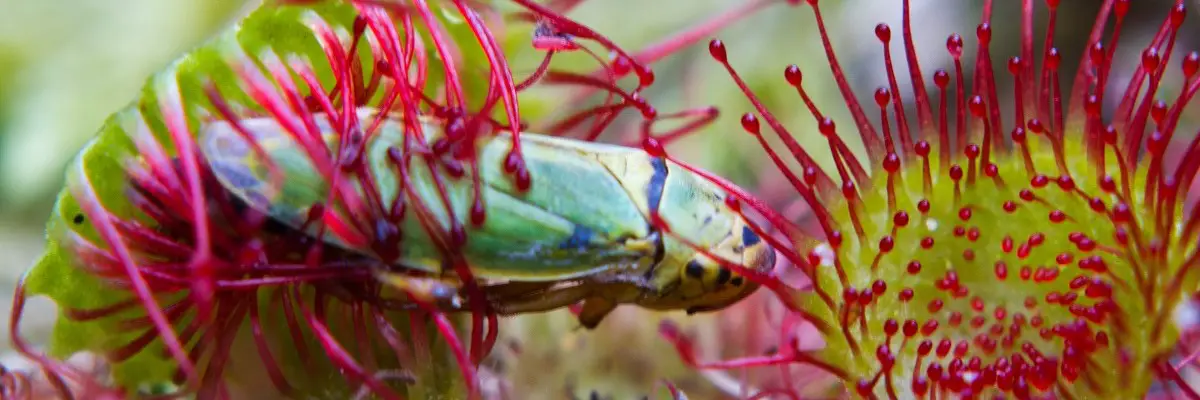Best Carnivorous Plants For Beginners: Carnivorous plants are an exciting and unique addition to any home garden. They’re fascinating to watch, and they can help keep your other plants healthy by consuming pests like flies or mosquitoes. Several options will make great additions if you’re a beginner looking for the best carnivorous plants for your garden.
The Venus Flytrap is one of the most popular carnivorous plant choices among beginners due to its easy care requirements and attractive appearance. The Venus Flytrap has bright green leaves that close around their prey when triggered by tiny hairs on their surface; these traps take about ten days before they’re ready again after catching something! This species grows in moist soil with partial sun exposure, making it ideal for those living in temperate climates who don’t have access to full sunlight all year round.
Another great choice for beginning carnivore enthusiasts is the Pitcher Plant (Sarracenia). These low-maintenance beauties grow well both indoors and outdoors as long as temperatures remain between 50-90 degrees Fahrenheit throughout the day/night cycle during active growth periods (spring through fall). Their pitchers come in shades of reds, purples & yellows, which attract insects into them where they drown & decompose, providing nutrients back into the soil surrounding them, making this plant self-sustaining!
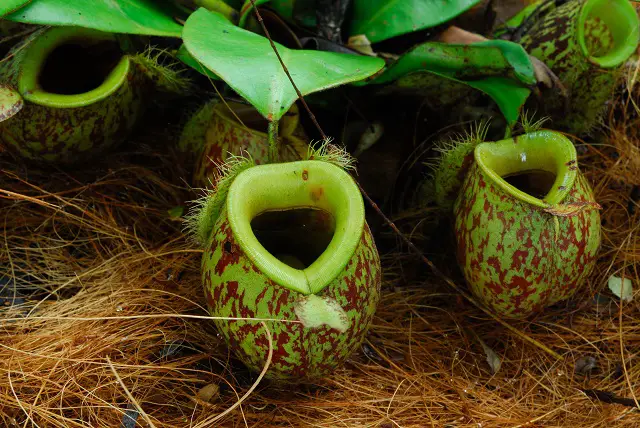
Sundews are also excellent beginner-friendly choices because of their hardy nature –– meaning they can survive with minimal attention from you while still growing beautifully over time when given adequate light levels & humidity levels above 40%. They come in many shapes and sizes ranging from small rosettes up to tall stems with delicate dew-covered leaves resembling spiders webs –– perfect if you want something more exotic than just plain foliage but still relatively easygoing compared to some other tropical varieties out there like Nepenthes or Darlingtonia Californica.
Lastly, we have Butterworts (Pinguicula) which require very little maintenance yet look stunningly beautiful, especially when grown together, forming large colonies across terrariums or outdoor gardens alike! These funky little guys use sticky mucilage on top of their leaves, trapping unsuspecting bugs, then slowly digesting them using enzymes secreted from specialized glands found only within butterwort family members – how cool, right!? Although not quite as eye-catching compared to some others listed here, Butterworth’s provides an interesting talking point amongst friends visiting your collection!
What is the most efficient carnivorous plant?
The answer may depend on what you consider to be an “efficient” carnivore—some plants trap more prey than others but require more energy to do so, while others use less energy but capture fewer victims. One certain thing, though: some of the most famous species, like Venus flytraps (Dionaea muscipula) or pitcher plants (Nepenthes spp.), are incredibly effective at capturing insects for food!
Venus Flytrap: The Venus flytrap has become one of the best-known examples of a carnivorous plant due to its ability to quickly snap shut when it detects movement from potential prey items such as flies or other small insects. It does this using sensitive trigger hairs within its modified leaves which act as traps for unsuspecting visitors! Once inside, it takes just milliseconds for these powerful jaws-like leaves close completely around their victim before secreting digestive enzymes into them – making sure nothing escapes alive!
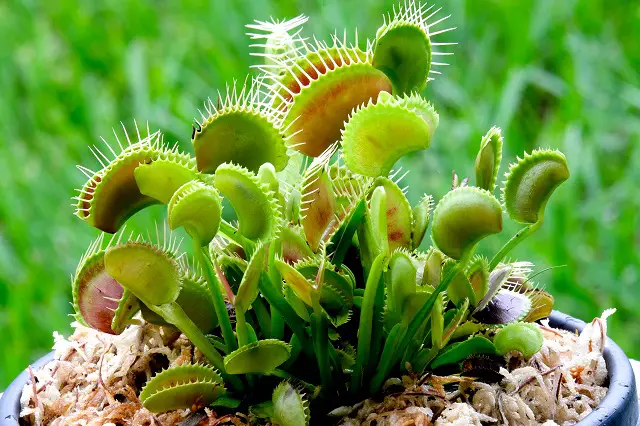
Pitcher Plant: Pitcher Plants also get their name from their unique shape; they feature deep tubular structures filled with liquid that attract flying insects who then fall into them, unable to escape due to slippery sides preventing any chance at freedom once trapped inside! As well as having fluid-filled pitchers, these amazing predators also possess nectar glands along with downward pointing hairs ensuring no insect can climb out even if they wanted too – making this another highly efficient method used by nature’s deadliest predators!
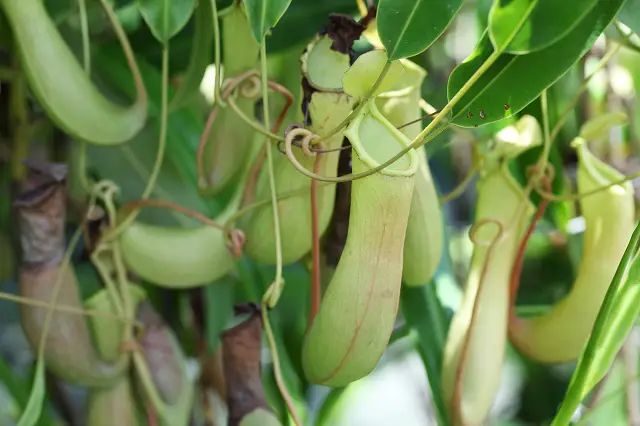
Sundew Plant: Sundews are perhaps lesser known compared to both Venus Flytraps & Pitcher Plants; however, don’t let this fool you because despite being smaller than many other types, they’re still extremely capable hunters able to ensnare anything unfortunate enough to cross paths with them thanks sticky tentacles covered tiny droplets containing powerful digestive enzymes ready devour whatever gets stuck onto surface!.
While all three species discussed here have been proven time and again how effective they can be when it comes to catching meals, there’s still debate about exactly which one might be considered the ‘most’ efficient hunter overall. Well, truthfully answer depends largely on the individual situation since each type offers different advantages depending on where they live/grow etc..
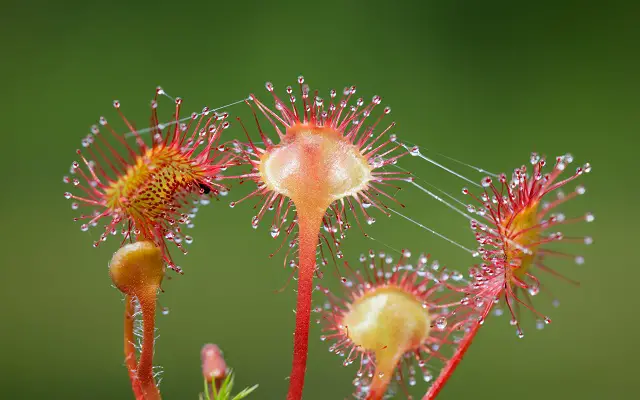
What is the hardiest carnivorous plant?
But which one is the hardiest? The answer may surprise you – it’s not a Venus flytrap or pitcher plant, but rather a lesser-known species called Utricularia gibba, also known as “floating bladderwort”.
Utricularia gibba is native to tropical regions around the world, including South America, Africa, and Asia. It grows primarily in shallow water bodies such as ponds, marshes, and streams where there is plenty of light but little competition from other plants or animals for nutrients or space. This makes U Gibba well adapted to surviving even harsh conditions like drought or extreme temperatures since its root system can easily reach out into deeper waters when needed.
U Gibba has an unusual method of capturing prey – instead of using leaves with sticky hairs (like many carnivorous plants), it uses tiny underwater bladders that act like traps when triggered by passing prey items such as small aquatic invertebrates like mosquito larvae. When something touches these sensitive trigger hairs inside each bladder, they instantly suck up any nearby food particles before releasing them back into their environment after digestion has occurred! This process allows U Gibbato to subsist on minimal resources while still providing enough energy for survival under difficult circumstances.
As mentioned earlier, UGibbas ability to thrive under tough environmental conditions gives it an edge over more delicate carnivores – making this plant one of nature’s toughest survivors! In addition, its hardiness also means that it can be grown outside year-round without needing much protection from cold weather or inclement weather (unlike certain other types of carnivores). What’s more? Its attractive foliage makes it ideal for ornamental gardens and aquariums!
How hard is it to keep carnivorous plants alive?
The first step in keeping carnivorous plants alive is understanding their natural habitat and trying your best to replicate it at home. Carnivorous species typically come from boggy areas with poor soil quality that lacks nutrients needed for normal plant growth; instead, they rely on insect prey as a primary source of nutrition, and moisture retention comes from high humidity levels around the plant’s roots rather than through frequent watering as most other houseplants require. To recreate this environment indoors, you should use a nutrient-free potting mix specifically formulated for carnivores, such as peat moss or perlite mixed with sand, along with plenty of drainage material like gravel, so excess water doesn’t accumulate around the root system. You will also need to accessorize your setup accordingly: terrariums provide adequate light exposure while maintaining necessary humidity levels. Open containers may require additional misting throughout the day depending on how dry your indoor air gets during winter months when heating systems run more frequently.
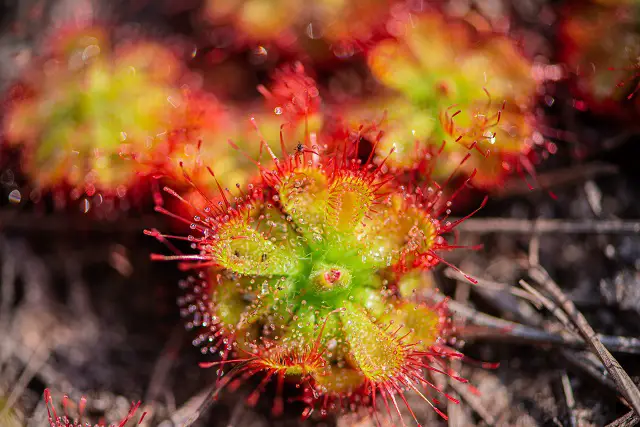
In addition to their specific environmental needs, many types of carnivores prefer acidic soils (pH 5-6), which can be achieved by adding sphagnum moss or pine needles into regular potting mixes; additionally, you should always avoid using fertilizers since these contain nitrogen which could potentially burn delicate root systems due too much concentration when absorbed directly through leaves instead being diluted in soil over time as traditional gardening practices suggest. When feeding live insects, don’t forget about safety precautions either. Some varieties may produce toxins that could harm humans if ingested, so ensure to wash your hands after handling them and wear gloves if possible! Finally, remember never to leave standing water inside pots because stagnant liquid creates ideal conditions for bacteria growth, leading eventually death to even the hardiest specimens out there!
Caring properly for carnivorous requires patience and dedication –but rewards far outweigh the effort put into maintenance once you see beautiful blooms thriving under optimal conditions! Just keep in mind all the above tips next time you decide to bring one of these unique beauties into your own space.

